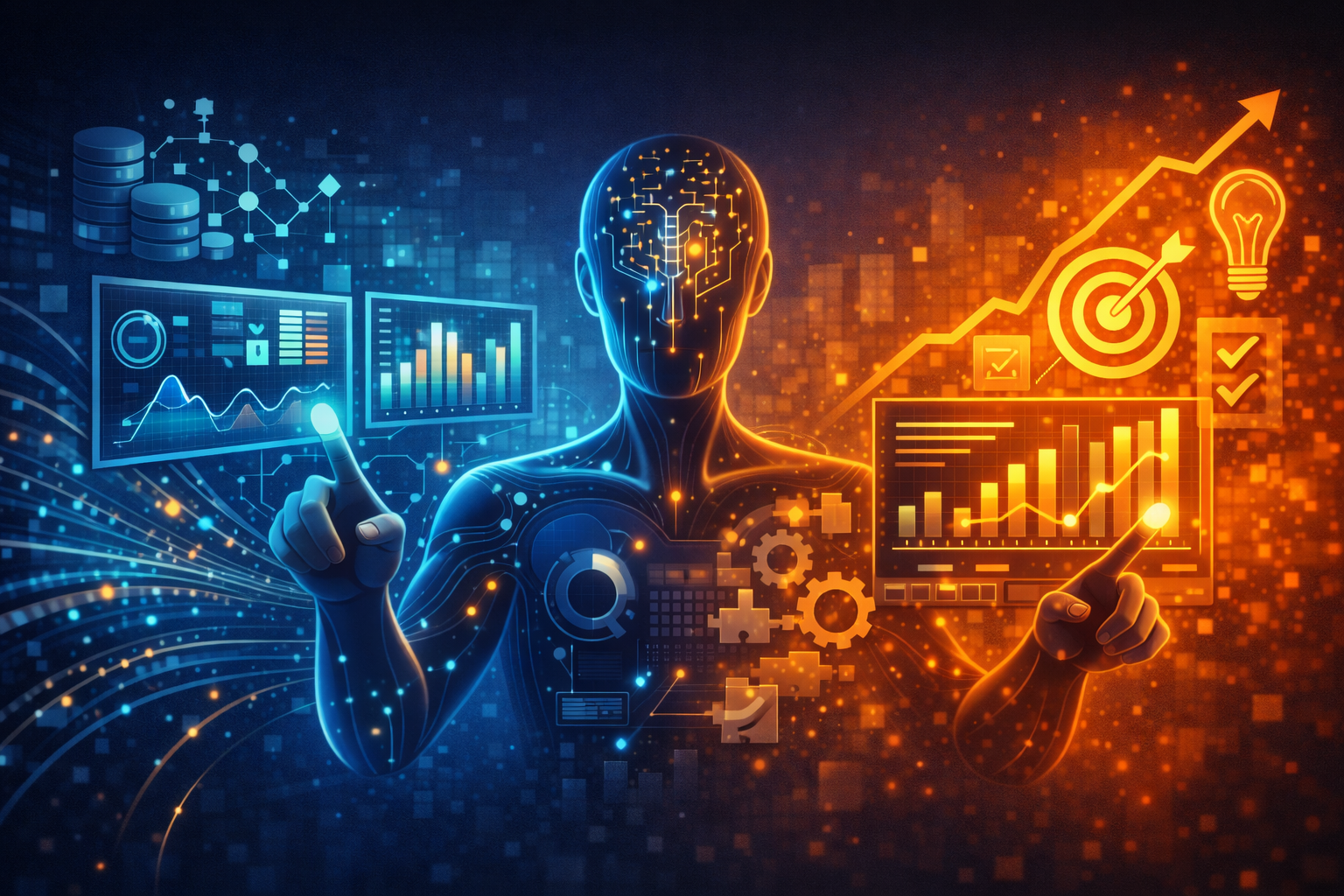Effective business decision-making requires organizations to constantly collect, process, and act on tons of data. Yet, the accuracy and timeliness of decisions are dismal. And it’s not the lack of data that is a reason for this. It is the inability to find connections and unearth links that make it difficult to understand associations and build relationships.
That’s where knowledge graphs come in! Read on to learn what a knowledge graph is and what it is not.
What Is a Knowledge Graph?
With data needs constantly evolving, businesses must be at the forefront of these demands to make better decisions. Despite the growing adoption of AI tools for intelligent data analysis, decision-makers struggle to make timely, high-quality decisions.
That said, knowledge graphs are now increasingly being used to power AI applications. So, what are they?
A knowledge graph is a collection of connected descriptions of concepts, entities, relationships, and events. It puts data in context by linking it with related factors and provides a framework for better data integration and analytics. It helps organizations move away from traditional approaches to data analytics and use the power of machine learning and semantics to better act on data.
Knowledge graphs allow data teams to define real-world entities, build relationships between them, and enable reasoning to infer new knowledge. By breaking any data into a subject, predicate, and object, they help build a visual picture of other related entities.
But just graphically listing different data points does not represent a knowledge graph. A knowledge graph should comprise data that is contextual to any given scenario. It should be represented and organized in a way that helps answers complex queries across data silos. Data, when represented and organized in the form of graphs, can help capture the ever-changing nature of knowledge. Instead of integrating data by combining tables, knowledge graphs help in endlessly linking concepts — without changing the underlying data.
Let’s take a scenario. Imagine if a team of doctors is trying to understand the reasons why a patient has had a heart attack. They might already have all the necessary patient data, including name, age, lifestyle habits, medical history, demographic details, medications, allergies, etc. But all this data is of no use if they are unable to build correlations. Using a knowledge graph, the team can understand the various risk factors and link them to unearth the real cause.
Why Are Knowledge Graphs Important?
In this day and age of data overload, making accurate data-driven decisions is not easy. While modern AI tools allow for data to be processed and analyzed, this is usually carried out in a siloed manner. Knowledge graphs allow for decisions to be made more holistically. They allow data experts to organize unrelated and unstructured data in a way that allows for easy correlation, understanding, and extraction.
By building explicit relationships between multiple entities, knowledge graphs help decision-makers:
- Integrate multiple datasets from a variety of sources that reflect the complexity of the real world.
- Bring in much-needed context to data and add newly derived knowledge on the go.
- Simultaneously visualize and link various types of raw data and discover inter-relations between them.
- Present complex data in an easy-to-understand format for querying and generating insights.
- Make numerous interpretations from the same data and get answers to complex queries with more efficiency.
Where Are Knowledge Graphs Popularly Used?
A picture is worth a thousand words! Did you know? Our eyes can process 36,000 visual messages per hour. About 90% of the information transmitted to the brain is visual. Also, visuals are processed 60,000X faster in the brain than text.
Knowledge graphs offer a great way to build relationships between data. By visualizing the underlying relationship of a data set and how different elements are interconnected, they help decision-makers get a better understanding of the data landscape and inform more intelligent strategic business decisions.
Knowledge gaps find several applications in modern organizations, such as:
- Identifying fraudulent transactions in the banking and financial services sector by traversing many real-time interconnected entities
- Streamlining complex supply chain networks by creating a digital representation of different entities, locations, and stakeholders
- Making quicker, data-driven software development decisions by avoiding sifting through millions of data points
- Building better interfaces and enabling better engagement by interlinking the different aspects that impact customer satisfaction
- Unifying clinical and scientific research data to accelerate drug discovery
Conclusion
Every enterprise wants to exploit data to unearth deeper and better insights and run the business more successfully. Although there is a lot of data available today, it doesn’t offer much value. Knowledge graphs allow businesses to move from data to knowledge. By bringing in context and unearthing correlations, they help in creating knowledge that can aid the decision-making process.
Offering a graphical illustration of different data entities and their relationships, knowledge graphs help in unifying data, integrating data sources, and visualizing relationships across the data entities. They help discover meaningful insights from organizational data and deliver excellent business value to organizations across sectors.
Explore the world of knowledge graphs today to combine siloed data sources, uncover relationships, and make more informed business decisions. Contact us to learn more.



.jpg)








